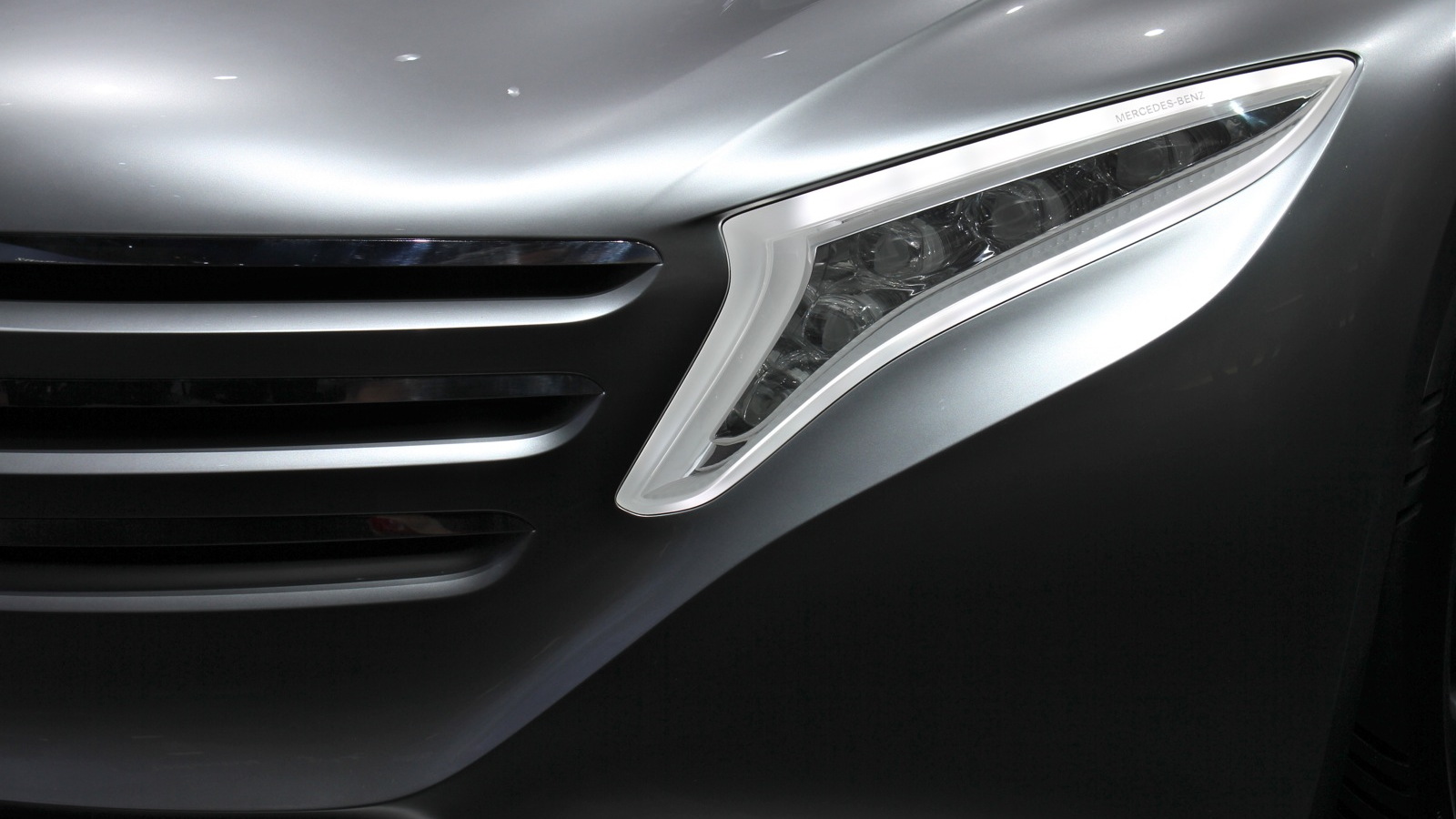When it does happen, Daimler AG chairman Dieter Zetsche says hopefully, the "battle for command of oil will be a thing of the past."
Zetsche says that channeling the most "democratic" of fuels--hydrogen is the most abundant element on earth, though it's not fuel-ready without energy-intensive cracking and without exceptionally sturdy storage--automakers can avoid having to cut hydrocarbon emissions from today's vehicles by up to 95 percent in the year 2050, just to keep carbon levels in the atmosphere where they are today.
The latest fuel-cell concept from the German automaker is the F125!, a gullwing car about the size of a future vehicle from the S-Class range. A plug-in hybrid with an EV range of up to 31 miles, and a theoretical maximum range of more than 600 miles, the concept pairs a 10 kW/h lithium-sodium battery pack with a hydrogen fuel cell for electric-driven miles and fuel-cell-driven range extension, all funneled through an electronic all-wheel-drive system.
The key to the Mercedes concept, Zetsche says, is that the complex storage problems of hydrogen--it's highly flammable and requires thick-walled, heavy tanks kept to temperature--are narrowed by better tank design. The engineering left unsaid, as it's still in development, will allow fuel-cell vehicles to store hydrogen at much lower pressure thank today's 10,000-psi tanks, and will be stable enough to be used as part of the car's structure. The rest of the body is fashioned from carbon fiber, aluminum, and high-strength steel--and is strong enough for wide gullwing doors that permit easier access to the rear seat.
Mercedes also hedges on the capacity of the Li-Na batteries. The concept's energy storage is estimated at double that of today's best batteries -- but says carefully that "the real potential of this technology is still being uncovered."
If those huge technical hurdles are passed, the F125! concept will have peak horsepower equivalent of 308 hp, good for a 0-60 mph time of 4.8 seconds and a top speed of 137 mph. It also won't require the recharging times of pure electric cars, the Daimler CEO snarked: "you could read War and Peace" in the time it takes some EVs to replenish their driving range. The fuel cell concept on stage, Zetsche promises, will be refillable in as little as three minutes.It's an homage to the brand's 125th anniversary, and a pitch to change cars forever, but the F125! is also a serious effort to keep cars the size of the S-Class from sinking into historic oblivion, as environmental concerns become a cornerstone of automotive engineering. Buyers today still want luxury cars, and even young car buyers want bigger, faster, more technologically advanced machines, Zetsche says. That's why this luxury concept has bronzed details, a blue-sueded interior, chaise-style rear seats and a huge LCD screen available to entertain passengers, not to mention 3D gauges, built-in social media with safety blocks built in, and control of car functions by voice or gesture. A wave of the hand, for example, opens those long gullwing doors.
There's also nascent car-to-car technology drafted into the design, technology that would allow some autonomous driving, even passing cars on the road ahead.
"We are talking about science, not science fiction," Zetsche said as Mercedes' Frankfurt preview drew to a close. It would take massive technological leaps to make the F125! reality, but as Zetsche says, automakers may not have a choice, other than to find those breakthroughs.
_______________________________________






